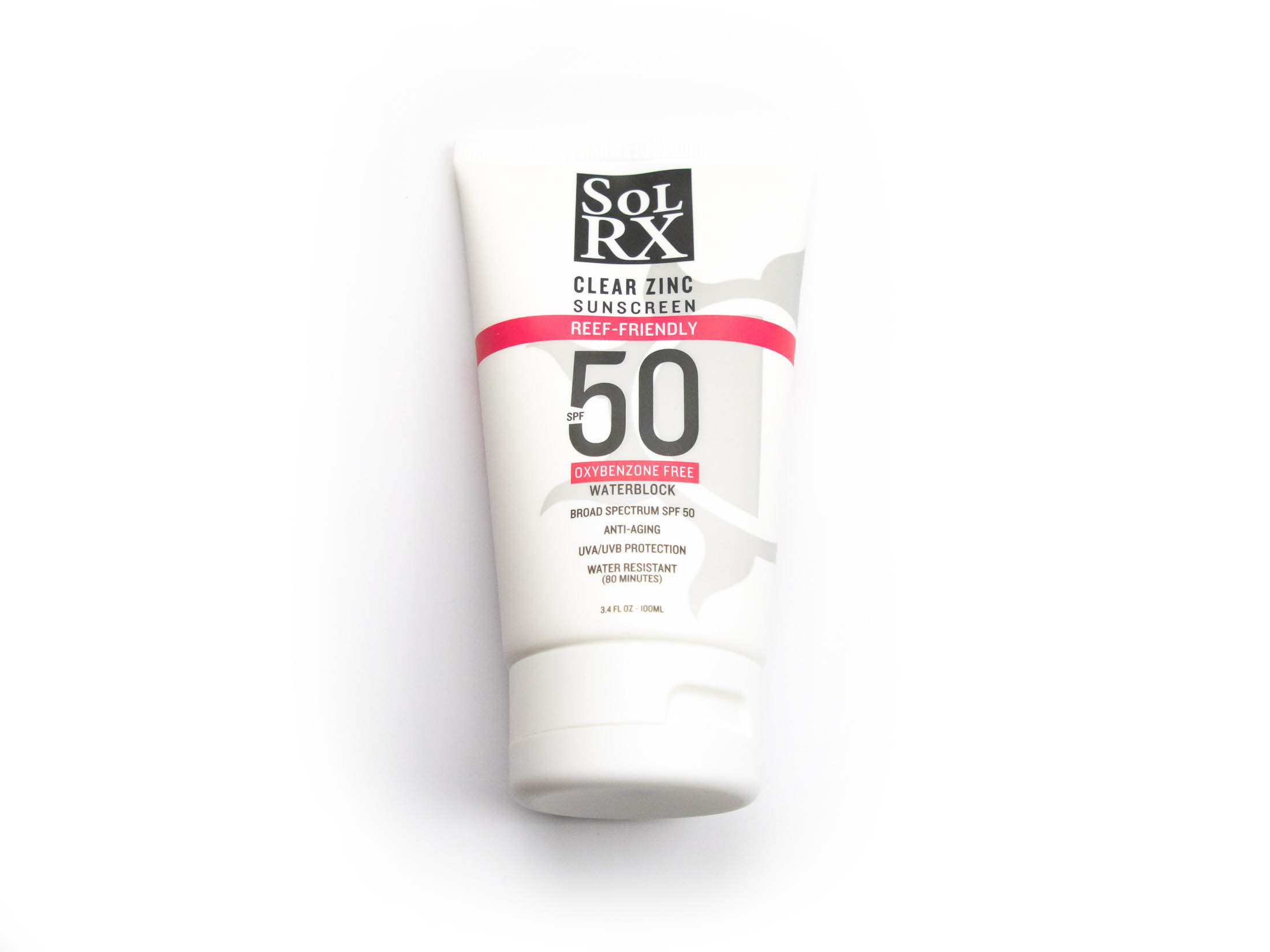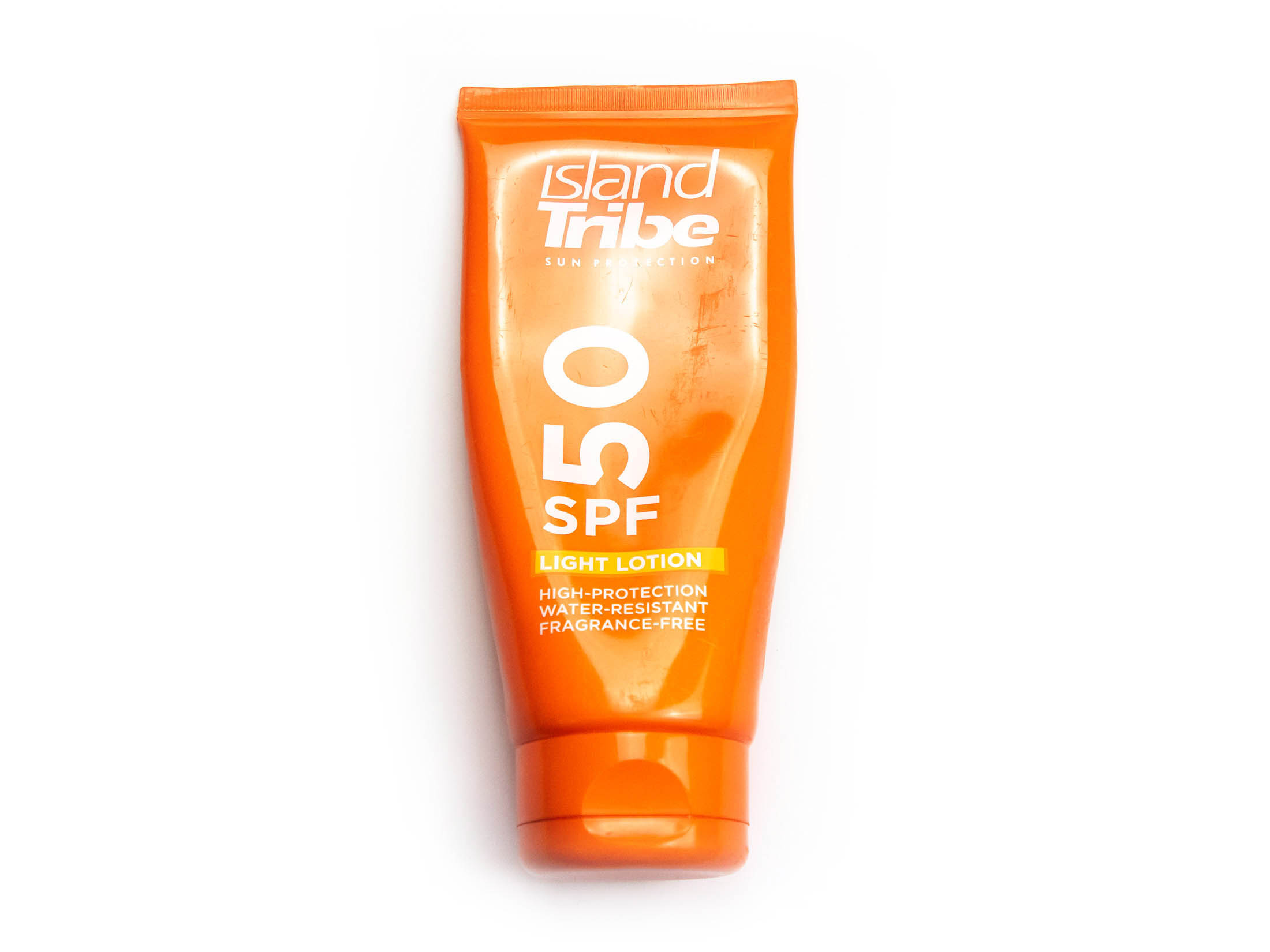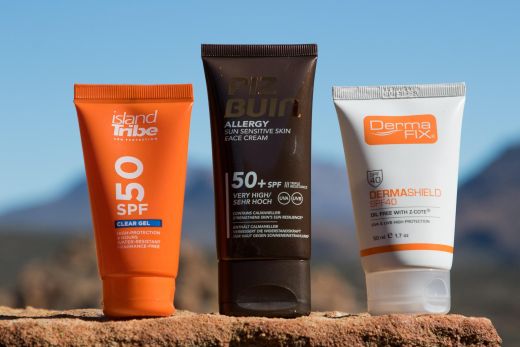One of the great joys of being outdoors is having the sun on one’s skin. But, like so many good things, the sun’s rays are something best received in moderation. Too much exposure to ultraviolet light can prematurely age your skin and, worse, cause skin cancer – a condition that is much more easily prevented than cured. Thankfully, science has given us a solution, and today there are a myriad of different brands and types of sunscreen to choose. Of course, the flipside to having so many options is that choosing a product is far from straight forward. Beyond the age-old question of “How do I keep sunscreen out of my eyes?” consumers now have to ask themselves “Why do I need broad spectrum sunscreen?”, “What’s the difference between mineral and chemical sunscreens?” and “What does reef safe mean?” Luckily, you have this article to answer all those questions and make that choice a little easier.
Factors
Waterproofness
Since you'll be using your sunscreen while hiking, biking, climbing (whatever your thing is), it's safe to say you'll be working up a sweat, and the last thing you want to do is sweat off your sun protection or get it in your eyes. Almost all sport sunscreens are rated as waterproof and will offer protection up to 40 minutes (even in water), but certain types (mineral sunblock sticks) are a lot less likely to run and sting your eyes at some critical moment – like when pulling the R-rated crux on your project or threading the needle on a class IV rapid.
Spectrum
There are two types of ultraviolet light that can harm your skin — UVA and UVB. UVA rays can penetrate the skin more deeply and are associated with premature aging. UVB rays cause more immediate damage and are the type of radiation responsible for sunburn. Sunscreens are given an SPF rating based on the protection they give against UVB rays, but both UVA or UVB rays can cause skin cancer. The best sunscreens are broad-spectrum and so offer protection against both types of UV light.
SPF
SPF stands for sun protection factor, a measure of how much protection a sunscreen gives against UVB rays. This rating is based on how long it takes the sun to burn skin treated with the sunscreen, compared to skin that hasn’t been treated with sunscreen. Experts recommend using a sunscreen with an SPF of at least 30, but if you are playing outside for hours at a time, you should be using nothing less than SPF 50. You could choose a sunscreen with a higher sun protection factor, but the truth is that SPF 80 is only slightly better than SPF50.
Types of sunscreen
Physical sunscreens
Physical sunscreens are sometimes called sun blocks or mineral sunscreens. They use mineral-based ingredients like titanium dioxide and zinc oxide to scatter or block UV rays. Because they put a physical barrier between the sun and your skin, they start to work immediately, unlike chemical sunscreens that take up to 20 minutes to start working. Because they don’t contain any chemicals, they’re also more likely to be reef safe (not containing any chemicals that are harmful to marine life). The only downside to this type of sunscreen is that it has to be applied thickly and should be topped-up frequently during watersports.

Pros
- Give instant protection
- Less likely to irritate skin
Cons
- Give skin a pale appearance
- Have to be applied more generously
- Requires more work to apply
Chemical sunscreens
Unlike mineral sunscreens, which sit on top of your skin, chemical sunscreens are absorbed into the skin. This makes them more resistant to washing off and means that they’re easier to apply (being thinner). They’re also less likely to leave a white cast on the skin once properly rubbed in (if that actually bothers you). The downsides of chemical sunscreens are that they need 20 minutes before they start to block UV rays (actually turning radiation into heat) and that they contain the likes of oxybenzone, octinoxate and octisalate. These chemicals pose a hazard to marine life, making this type of sunscreen better suited for outings to the water park and pool than days at the beach.

Pros
- Spreads thinly and easily
- Requires less product
Cons
- Can cause irritation to skin and eyes
- Offers protection only 20 minutes after application
- Can clog pores and worsen acne
Spray, lotion or stick
Spray
Sprays are the easiest form of sunscreen to apply, and because they go on thin, they’re a good option for hairy areas like the nape of the neck and chest. They’re also not as greasy as lotions and creams. Downsides? They come out of an aerosol can. Don’t spray this stuff directly onto your face. Spray it into your hand and then apply it to your face.
Lotions and creams
Like sprays, lotions are a good option for larger areas, but they require more work to rub in. On the upside, many contain a moisturiser and are a good option for people with dry skin. Some chemical-based creams can leave your skin feeling greasy. But if this is an issue for you, you can always go with a mineral lotion, which will be less likely to give you that sticky feeling.
Sticks
Sticks are generally mineral based and so are less likely to run – perfect for around your eyes and good for lips. In fact, sticks are generally the best sunscreen to apply to your face. They can be applied thickly and so are good for protecting scars and sensitive areas like your nose. On an even more practical note, a stick won’t explode all over the inside of your pack, and they often come in smaller sizes.
When and how to use sunscreen
When should you use sunscreen? Everytime you go outside. Damage from UV exposure is cumulative and increases your risk of skin cancer risk over time. If you want to protect yourself properly, you should put on sunscreen wherever you venture outdoors for more than 15 minutes. And don’t let cloud cover fool you. UV rays pass straight through water vapor, and grey skies do nothing to protect you.
On that note, you should also be aware of reflected light and remember to apply sunscreen under your chin when you’re around water or snow. Lastly, don’t forget the tops of feet and behind the knees. Reapply every two hours or even more frequently if in or around water.
Skincare beyond sunscreen
Sunscreen is only one means of sun protection. For full protection, you should also wear a hat, UPF clothing, and suitable sunglasses. Sun protection clothing (that with a UPF rating) is designed to provide true UV protection to the person wearing it. Your favourite white T-shirt might only have a UPF rating of 5 – and allow 20% of all UV radiation to pass through it – while UPF clothing rated to 40 and higher will allow for less than 2.5% UV transmission. Sunglasses, too, need to be chosen for the right level of protection – at least UV 400. Cheaper non-UV rated sunglasses will cause your pupils to dilate in response to the dimmed visible light but then won’t filter out UV light, increasing your retina’s exposure to radiation. A pair of UV-rated sunglasses really is one of the best investments you can make.
